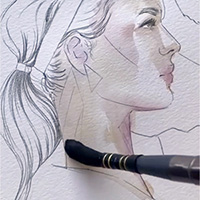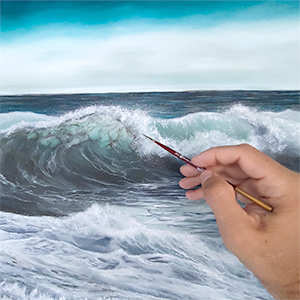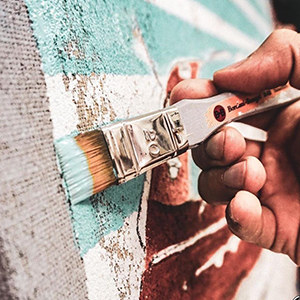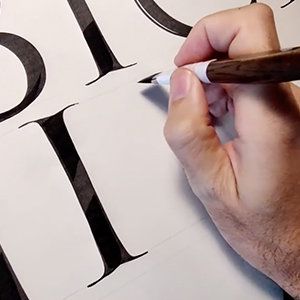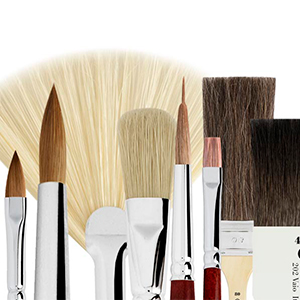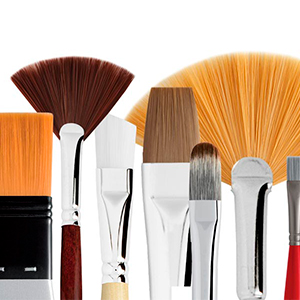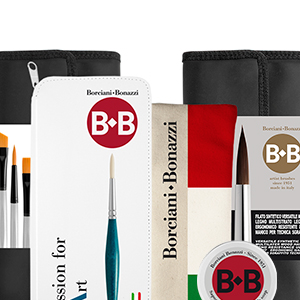Material painting – The sign of painting
Textured Painting: the sign of painting
The mark of painterly matter, whatever it may be, has become an integral part of contemporary painters' experiments thanks to textured painting. The trace in color, the beauty of the paint relief, and the three-dimensionality of the image have become part of creating and making art.
To identify the birth of this type of painting, one must go back a century: already in the early 20th century, first the Impressionists and then the Cubists, sought to "break out" from the canvas and the images of classical iconography by using denser and more pasty colors and imprinting the expressive marks of their brushstrokes into the color material to give strength and personality to the work.
Including pieces of physical reality, such as newspaper clippings, sand, and fabrics in the artwork, became a way to connect to the artist's daily life, which in a period of wars and transformations, was increasingly less confined to their studio: a painting that at the time was stigmatized as "raw," but which set the stage for the evolutions of art up to the present day, from color to the incorporation of materials of different types.
From the mixing of natural sands in historical avant-gardes to the spatula application of oil and acrylic colors, everything has moved towards a 3D vision of the image.
.jpg)
The History of Textured Painting
Textured painting was born when mass-produced colors emerged: new blends, no longer handcrafted by apprentices, become available to artists to experiment with new visions.
At the end of the 19th century, the Impressionist painters first, and then the entire movement of the Fauves, transformed the painting of image definition into visible patches and painterly traces: the press writes and spreads what is happening, photography is emerging, and there is no longer a need for an art that describes reality from the closed doors of painting studios.
The brushstroke is the artist's emotion in a precise moment, which comes out and goes into the cities and countryside to paint en plein air, capturing the moment and the atmosphere that their eyes register.
Incised into the paint, and still talking about oil paints, the painterly trace becomes the artist's signature transformation: if we look at a Van Gogh, we will recognize the color moved by the brush in swirls and traces that define the forms, something that had never been seen in traditional art.
The textural ridges of oil painting marked by bristle brushes define and transform the color. More and more, the artist is an active witness of their time: often engaged in political struggles, they cannot refrain from bringing reality into their works.
Picasso is perhaps the first artist in history who, living in an era of great transformations, wants to bring it almost physically into his paintings, by inserting pieces of newspaper and articles about the impending war: the written word integrates into the artistic vision and becomes a witness to reality.
From this point on, art will no longer just be a witness but becomes a voice that screams its personality out of the chorus.
There are critics who define this historical period as "the Death of ART," and certainly a part of it becomes less relevant, but it is the era of the birth of a new ART, a conscious ideological expression and thought transformed into images.
Marcel Duchamp, the CUBISTS, and the DADAISTS thus open a new chapter in painting, aiming to physically integrate everyday objects into the pictorial work: ropes, papers, rags, and denser color are the artist's cries that "come out of the frame."
The significant evolution of textured painting will only be seen with the advent of new materials: the color manufacturing industry, moving in step with artists' demands, creates acrylic paint.
The physical characteristics of this material, born from a mixture of painting pigment with an innovative binder such as acrylic resin or vinyl resin, give the artist new infinite possibilities: drying times are quick, and the structure of the paint itself can gather and "fix" materials on the canvas with densities completely different from oil paint.
Layering becomes the way of painting because the humble material of the early acrylic colors lacks vibrancy, but allows for 1000 quick passes, and more and more artists include "real" materials in the paint.
New avant-garde currents like ARTE POVERA make material the protagonist of art: the die is cast, and the artist can create sculptural paintings that finally enter physical reality!
The art of our days is the result of these mixtures and possibilities. The color industry has created, especially in recent decades, ready-to-use materials with different densities from traditional techniques to support this material trend in painting: dense and pasty oil colors, with dispersed microgranules in the color, mediums of impasto, and acrylic gels containing various materials, from marble dust to small flakes of transparent plastic, mica, and iron oxide powder.
The artist no longer needs to physically mix sands and materials with glue and color to achieve material results but can find what they are looking for on the market and adapt it to their expressive needs.
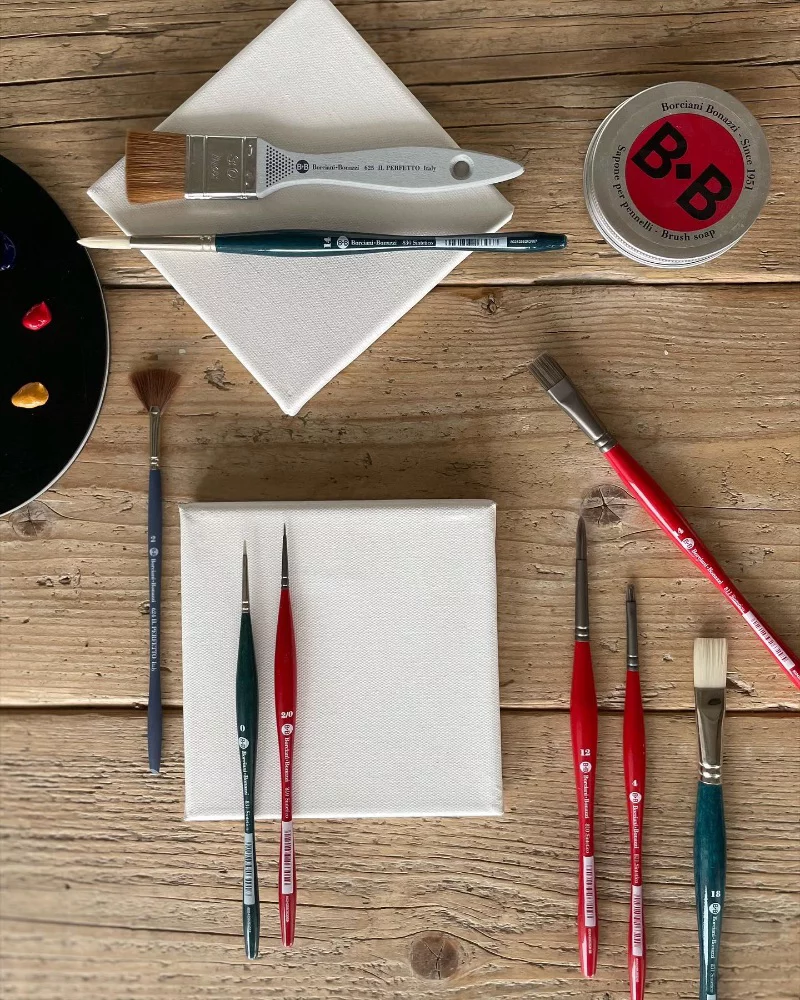
The Tools of Textured Painting
To effectively manipulate these colors, which are so diverse, dense, and thick, while preserving and enhancing their physical characteristics, we need to find the most suitable tools!
In addition to the use of steel spatulas, which have enriched themselves with various shapes and sizes, the suitable brush remains the most natural and expressive extension of our way of making art, leaving traces of our thoughts in the paint material.
As with traditional techniques, the first major division we must make is the choice between natural hair brushes and synthetic filament brushes.
Certainly, to manipulate the color, we need rigid bristles or fibers that have the strength to move and the personality to leave clear traces, which we will use at our discretion, creating volumes and dynamism.
The second division into macro groups is the technique with which we want to work, which changes the selection characteristics based on whether a color is oil-based or water-based. When it comes to textured painting, this division is not crucial since the focus is on the painterly mark, but it will be important when it comes to cleaning the brushes.
The common denominator is that the brush fibers should be able to move the color and leave traces within it, so we will discuss sturdy and not very flexible brushes, with a wide diameter of hair or filament. They must maintain their shape and be tenacious enough to move the material.
The Choice Between Oil and Acrylic for Textured Painting
Which paint to choose for textured painting? The choice falls between oil and acrylic.
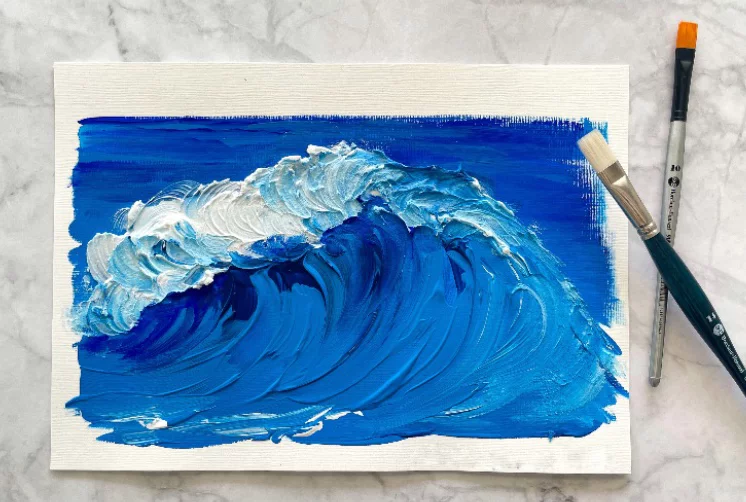
Oil paint is inherently a fatty and pasty substance, which if not thinned with linseed oil or solvents such as turpentine, retains the painterly trace of the brush on the surface during application. The small ridges that form are the very sign of the painting, shiny and vibrant, and do not flatten during the slow drying of the paint.
Water-based acrylic paint, on the contrary, tends to flatten the natural reliefs of the brushstroke during drying: for this reason, it is mixed with mediums and/or gels to make it more viscous, significantly slowing down the drying time.
Alternatively, there are 3D paints available on the market, with a thick consistency, suitable for optimal results in textured painting. The mediums mixed with them change the density and appearance of the paint, from matte to glossy to textured with granules and flakes.
Traditional white bristle brushes like the Borciani e Bonazzi series 50 are ideal for creating painterly marks in textured painting: robust and with excellent shape retention, they have good color absorbency and create the mark that moves the artwork. White bristle is sturdy and large in diameter, leaving a clear and precise trace of each fiber.
Special attention can be given to the trace of the series 55, with a fan-shaped tip, which leaves a trace of parallel lines without moving the underlying mass of color.
Different in hardness is the blonde bristle, which has excellent resistance to abrasion on porous surfaces and has always been used for mural decoration. It has greater elasticity, thus leaving lighter traces in the paint material.
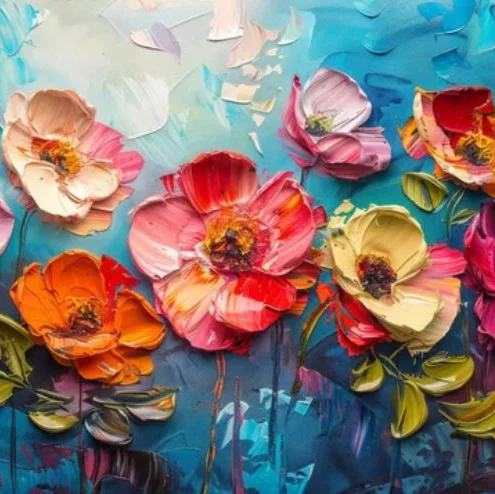
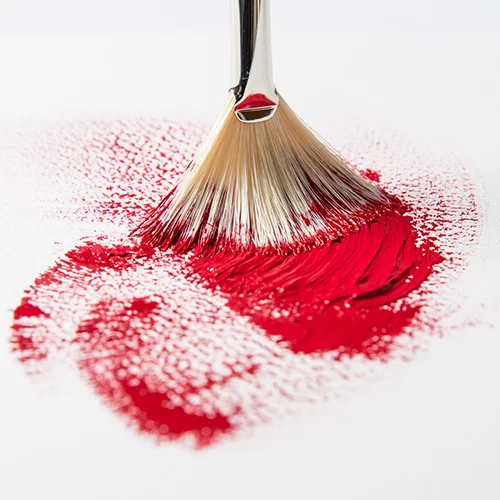
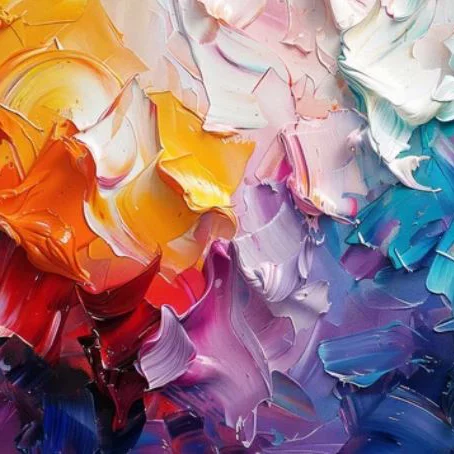
Which brushes to choose for textured painting?
Opting for synthetic filament brushes offers various options:
Brush for textured painting: series 830 UNICO Off White

Series 830 UNICO OFF WHITE, a brush with synthetic fibre that imitates the white bristle, sturdy and tenacious, has good absorbency and marks the paint material on the surface.
The mark is characterized by elastic fibers, leaving traces and ridges, perfectly moving the paste-like oil material.
Ideal for multi-layered work, the 830 OFF WHITE fibre is thick and full. A cruelty-free alternative to hog bristle.
The handle is balanced and ergonomic, comfortable for long working sessions, and does not stress the hand and wrist joints.
Brush for textured painting: dark red violet fibre

The synthetic brushes in dark red violet fibre, available in series 1, series 2, series 3, series 4, and series 6, feature a traditional long handle for easel work or a short handle for tabletop work. They are characterized by a precise and defined painterly mark, almost like an incision in the material, with punctual and precise lines.
With very low color absorbency, they leave a clear trace and move the material with robustness. The filament is rigid and very tenacious, characterizing types of high-precision brushes such as series 600 and series 605 for micro-painting. Ideal for evident marks both in acrylic mediums and in relief details in oil painting.
Brush for textured painting: series 810 UNICO Silver

Series 810 Unico Silver is an excellent compromise of synthetic fibres that combines a large diameter fiber, which provides tenacity and a defined mark, with a hollow fiber, high absorbency of medium and water, which occurs through suction from the brush tip.
It has excellent resistance to wear even on porous surfaces, with good color absorbency and a consequent longer stroke, even in the presence of thick and pasty materials.
The mark is precise and defined throughout the color material, ideal for textured painting in 3D acrylic, mediums, and gels.
Due to being a hollow fiber, thorough cleaning and drying upside down in the brush washer are recommended to allow the filament cavity to rid itself of all traces of color.

























